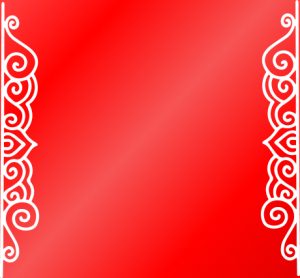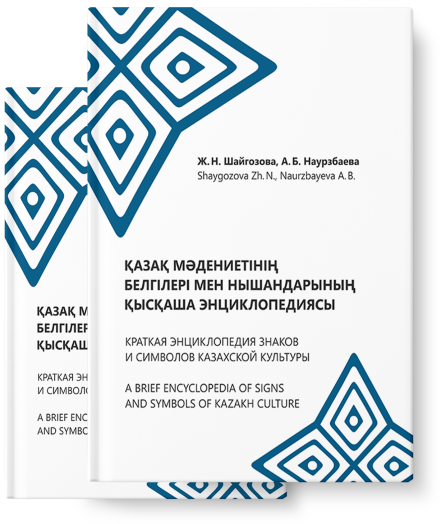
A short encyclopedia of
Signs and symbols of
Kazakh culture

“Kyzyl” (red) occupies a place in the sacral hierarchy of traditional Kazakh colour. Semantically connected with the sun and its derivative – fire, it is most often used in folk culture and folklore in the meaning of “young, newborn”. Therefore, in southern regions, a woman’s wedding dress (chapan) was sewn from red fabric and decorated with plant rosettes symbolising the sun. Red was long considered a strong talisman by the Turks and could serve as a heraldic sign of power.
The colour also appears in other Kazakh family rituals. For example, it was the custom to tie a red cloth (flag) to the home where a camel calf had just been born. Interesting information is obtained by examining toponyms with the lexeme kyzyl, which means life and south side. For example: kyzyltepe – southern hill, kyzyltag – southern mountain, etc. In general, red is a life-affirming colour among Kazakhs. The basic tone of traditional knotted carpets includes many shades of red up to burgundy, symbolically marking the midland, the world of the living. The importance of the colour red is also reflected in the design of the standards of the Turkic Mongolian peoples.
In Turkic culture, red symbolises kinship, generational relationships, strength, energy, heroism, and ultimately joy and victory. In the epics of many Turkic peoples, this colour is an expression of heroism.
This colour is no less popular in world culture: in China it is a symbol of happiness and prosperity; among the Polynesians it is synonymous with “beloved”; among Christians it is the colour of sacrificial blood; among the Egyptians it is associated with the devil-god Seth and the enemy serpent Apop; in Japan red is associated with the goddess Amaterasu – the ancestress of the Japanese people, etc. Like other colours, red can have different meanings in world culture, ranging from positive to negative. It can be aggressive (the colour of hell and the devil) and majestic (the colour of love, power).

